How to Make a Fitness App FAST (NO Code) in 2025
Learn how to make a fitness app without any coding by leveraging the best no-code fitness app builder.

To make a fitness app fast without coding, use a no-code fitness app platform like Exercise.com that lets you create a fitness app with built-in features like workout delivery, client messaging, payment processing, and progress tracking—all under your own brand. Whether you’re trying to build your own workout app, develop a fitness app for online coaching, or create a fitness app free from scratch, you don’t need developers or months of testing.
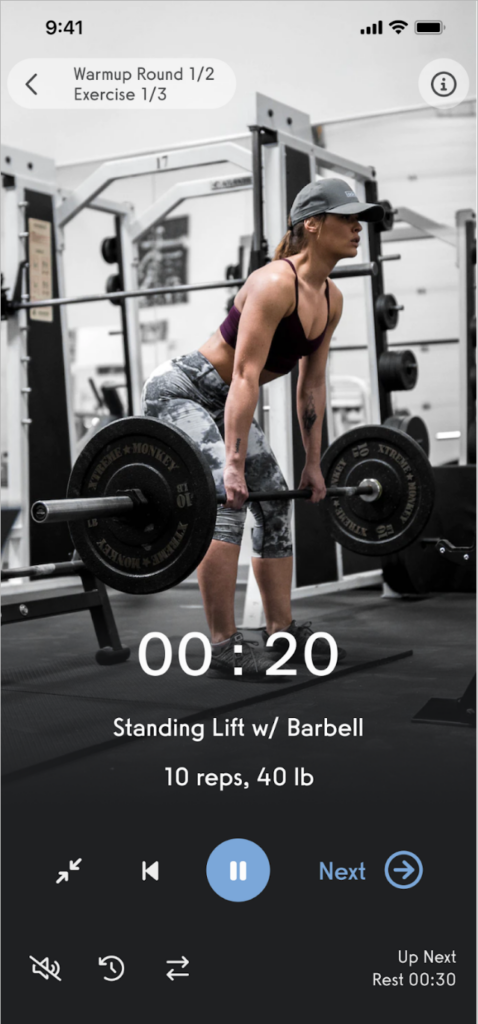
Many fitness professionals ask, “How do I create a fitness app?”—but get overwhelmed by the technical side. Hiring fitness app developers is expensive, time-consuming, and still doesn’t guarantee you’ll end up with an app that works for workouts, memberships, and business growth. Even fitness entrepreneurs who want to build fitness apps or build their own fitness app often hit a wall with features like client check-ins, in-app video delivery, or automated billing.
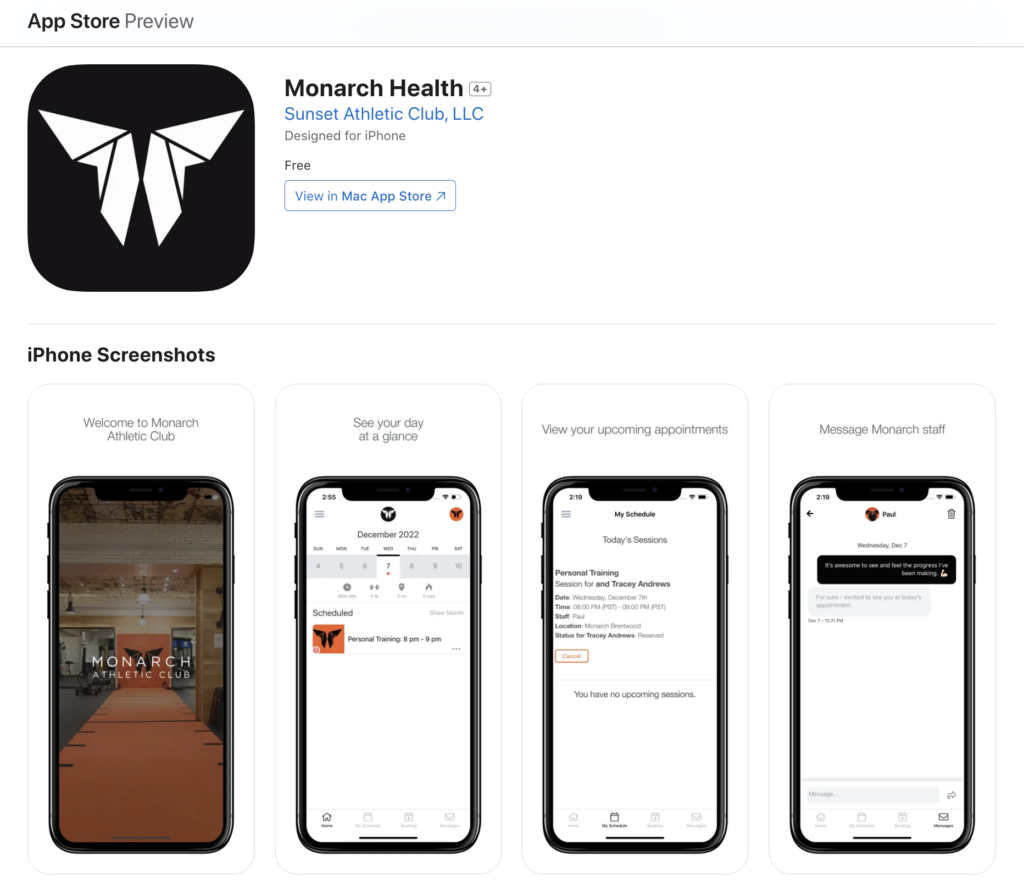
Exercise.com solves this by giving you a powerful no-code platform to build your own fitness app fast. You can customize your app with your branding, sell programs, deliver workouts, and manage clients—all in one place, no coding required. Whether you want to create a fitness app free of tech hassles or are ready to build a scalable fitness business, Exercise.com gets you launched faster, with everything you need to grow.
If you’re wondering how to create a fitness app, learn why using Exercise.com to create your own custom-branded fitness app is an exceptional choice. Can you learn how to make a fitness app for free? Yes! You can spend hours on YouTube learning how to create a workout app for free, but what if you need to create a fitness app FAST? Here’s how to create your own fitness app with the best fitness app creator software AND an expert team of REAL people to help you: Exercise.com.
Learn how to create a fitness app so that developing a fitness app isn’t an excruciating process of fitness app development cost overruns and delays. Choose a custom branded fitness app from Exercise.com that just works—with no code required by you!
Want to know how to make a fitness app fast without writing a single line of code? Whether you’re a personal trainer, fitness influencer, gym owner, or entrepreneur with a vision, you can now create a fitness app quickly and affordably—no developers needed.
If you’re searching for “how to create fitness app” or looking to “build your own fitness app,” the best solution is to use an all-in-one platform like Exercise.com. Our platform lets you create a fitness app free of coding—fully branded, fully functional, and fully yours.
With Exercise.com, you can:
- Create workout programs and deliver them via your app
- Sell memberships or programs with in-app purchases
- Track client progress and message users directly
- Use your own branding with your logo, colors, and content
You don’t need a developer to “develop fitness app” features or worry about app store logistics—Exercise.com takes care of it all. Whether you want to build your own workout app or expand your fitness brand globally, this is the fastest, smartest way to launch.
Ready to get started? Book your free demo and see how to build fitness app functionality fast—without code and without hassle.
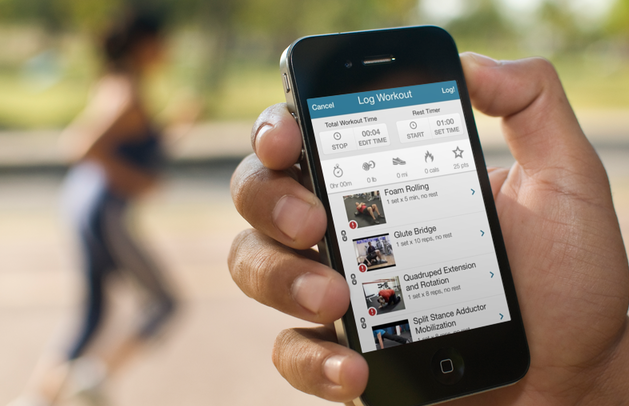
Want to create your own custom branded fitness apps? Get a demo now!
Learn how to develop a fitness app fast. Choose the fast, affordable, and fully custom-branded choice so that you can turn your fitness app into a revenue generating tool for your fitness business. Here’s everything you need to know to make a fitness app without any coding, design, or big software development expenses. Read on for a step-by-step guide on how to create a fitness app with no coding required. Then see why the best gym software, the best personal training software, and the best fitness software for fitness influencers is all found on the Exercise.com platform.

How to Make a Fitness App Without Any Coding
Creating a fitness app without any coding experience might sound like a daunting task, but with tools like Exercise.com, it is now a straightforward process. Here’s a step-by-step guide on how to make a fitness app without any coding:
Step #1: Identify Your App’s Purpose and Audience
Before diving into the technical aspects, it’s crucial to define the purpose of your fitness app and understand your target audience. Whether you want to learn how to make a yoga app, a workout app, a gym app, a 6-pack abs workout app, or something else entirely, this step involves researching the market, identifying gaps, and understanding what your potential users need from a fitness app.
Detailed Exploration:
- Market Research: Analyze existing fitness apps to identify popular features and potential areas for innovation.
- Target Audience: Determine who your app is for – fitness enthusiasts, beginners, specific age groups, etc.
- Unique Value Proposition: Decide what will make your app stand out. This could be unique workouts, community features, or personalized nutrition plans.
Exercise.com, recognized as one of the best fitness app development companies, can guide you through this process, ensuring your app idea is viable and tailored to your audience.
Step #2: Choose the Right No-Code App Builder
Selecting a no-code app builder is a critical step. You need a platform that is intuitive, offers a range of features, and can deliver a professional-looking app.
What to Look For:
- Ease of Use: The platform should be user-friendly, even for those with no technical background.
- Customization Options: Look for a builder that offers a wide range of customization options to align with your brand.
- Feature-Rich: Ensure the platform supports all the features you want in your app, like workout tracking, video tutorials, and social integration.
Exercise.com is renowned as the best no code fitness app builder software, offering a balance of simplicity and functionality.
Step #3 – Design Your App
With a clear idea and the right tool at your disposal, the next step is designing your app. Ordinarily, if you were to have to make your own fitness app from scratch then this this phase could take months of time and require thousands of dollars of expense, because it involves laying out the user interface, selecting color schemes, and planning the user journey within the app, but with the best white label fitness app software from Exercise.com, you can be up and running in a matter of days!
Focus Areas:
- User Interface (UI): Design a clean, intuitive UI that enhances user experience.
- Branding: Incorporate your brand’s colors, logos, and style to make the app uniquely yours.
- User Experience (UX): Plan the user journey to ensure it’s logical, intuitive, and engaging.
Exercise.com’s custom branded fitness app service allows you to create an app that not only looks professional but also resonates with your brand identity.
Step #4: Integrate Essential Features
Your fitness app should include features that are essential for user engagement and retention. These might include workout plans, tracking capabilities, social sharing, and more.
Key Features to Consider:
- Workout Plans: Offer a variety of workout plans catering to different fitness levels and goals.
- Tracking and Analytics: Include features for tracking workouts, nutrition, and progress.
- Social Integration: Allow users to share their achievements and interact with others within the app.
With Exercise.com, you can integrate these features seamlessly, thanks to their best white label fitness app software.
Step #5: Test and Launch Your App
Before launching, it’s crucial to thoroughly test your app. With Exercise.com, you can be confident that your app framework works smoothly and has been tested multiple times, but you still want to make sure all of your workouts are created properly, your exercise demonstration videos are exactly how you want them (we also offer an exercise video library to use if you prefer not to film your own exercise videos, or just don’t want to wait), and all of your messaging and copy is dialed in to your liking and on brand. This step ensures that all features work as intended and that the user experience is smooth.
Testing and Launching:
- Beta Testing: Release a beta version to a select group of users for feedback.
- Iterate Based on Feedback: Make necessary adjustments based on the beta test results.
- Launch: Once satisfied with the app, launch it on the appropriate platforms.
Exercise.com provides support throughout this process, ensuring your app is polished and ready for public release.
Note: Be careful you don’t endlessly spin your wheels with paralysis by analysis. It’s now time to launch your fitness app and start monetizing your fitness app! There are tons of ways to make money from fitness now that you have your own fitness app.
Step #6: Market Your App
Finally, developing a marketing strategy is essential for the success of your app. This involves promoting your app through various channels to reach your target audience.
Marketing Strategies:
- Social Media: Leverage social media platforms to create buzz around your app.
- Content Marketing: Use blogs, videos, and other content to attract and engage potential users.
- Partnerships: Collaborate with fitness influencers or related businesses to expand your reach.
Exercise.com’s expertise in fitness app development includes marketing support, helping you to learn best practices from other fitness professionals to effectively promote your app.
By following these steps and utilizing the resources and support from Exercise.com, you can create a successful fitness app without any coding experience. Their comprehensive platform and professional guidance make them the ideal partner in this journey.

- Best Fitness App Development Companies
- Fitness App Statistics
- Best Personal Trainer App Builder Software
- Best Personal Trainer Client Tracking Apps
How Fitness Professionals are Creating Fitness Apps with Exercise.com
Let’s get right to some practical ways that you can create your own fitness apps. With the Exercise.com platform you have a number of options to run a comprehensive online fitness experience for your community, all custom branded with your own fitness branding.
You can sell workout plans online, run fitness challenges, offer access (paid) to an online workout group, you can sell online training sessions, sell a membership to your own custom branded fitness app, offer mobile workout logging in your own workout apps, and much more. Here are some easy things you can do with the Exercise.com software platform.
Use the Exercise.com workout plan creator to create your workout plans.

Then mark them for sale online so you can sell workout plans easily and quickly.
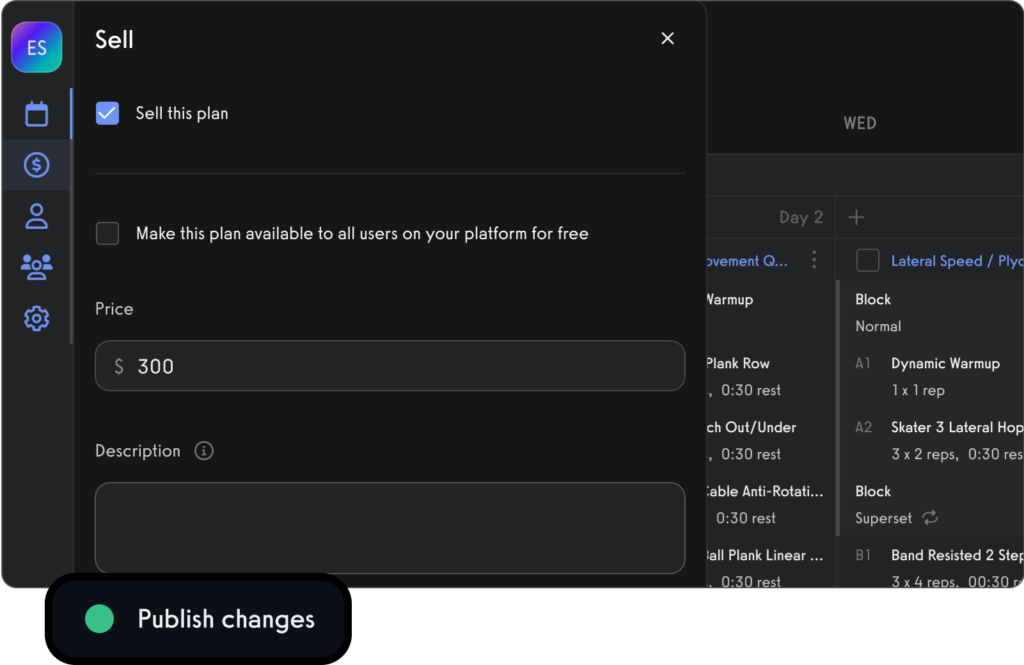
Publish your custom branded fitness apps so you can offer a premium workout logging experience to your community.

Your fitness followers will be able to search your name in the App Store and Google Play Store and then download your fitness app (no more instructing your followers to search for some other company’s name—start building your own fitness brand with your very own custom-branded fitness app!)

Your community can open up your fitness app and view their daily journal to log workouts, watch fitness videos, complete their daily habits, and more.
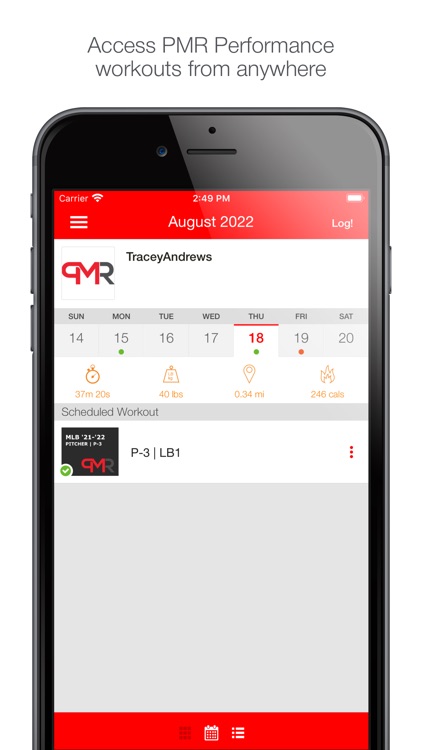
Create your own exercise demonstration videos or use the Exercise.com exercise video library to create a professional workout logging experience that your community will love and be happy to pay for (no more emailing around cobbled together PDF documents that people will just copy and share). Charge real money for a top notch fitness app that you will feel good about.

You can send messages to your community with email, SMS, and in-app messaging right inside of your own custom branded fitness apps, and you can even set up powerful fitness marketing automations to send messages automatically based on key triggers.
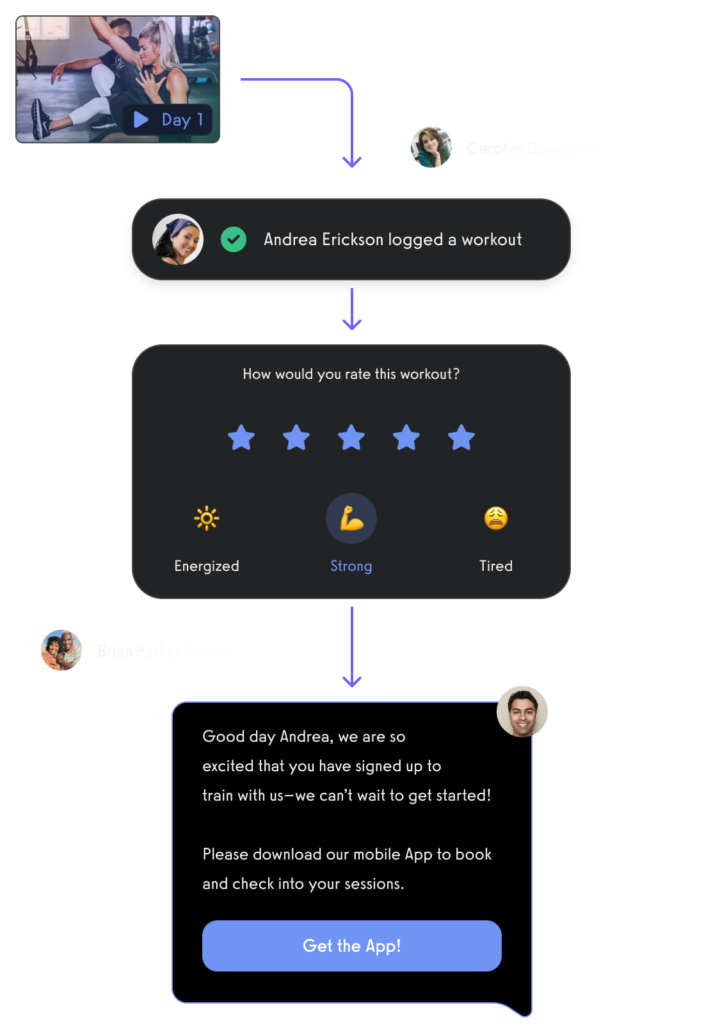
You can easily run your own virtual fitness challenges.
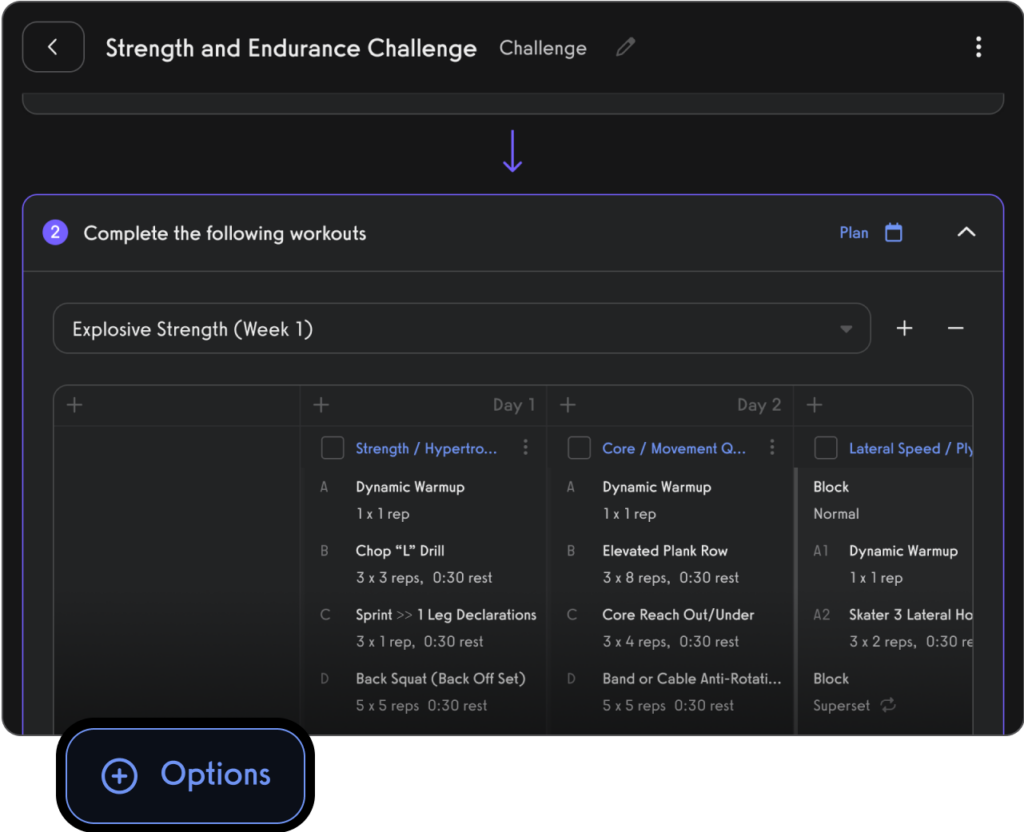
And create online workout groups, do distance training, sell workout plans online, time-release workouts in your apps, offer habit tracking, deliver nutrition guides, and much, much more, all right within your own fitness apps, and branded under your own fitness brand.


Ready to get started? Get a demo now!
Read More:
Get Your Own Fitness App
The fitness industry has seen a major shift towards online platforms, especially fitness apps. Fitness apps not only cater to individual fitness needs but also provide a profitable business model for fitness professionals. So, what’s stopping you from getting your own fitness app? (If you aren’t sure what to name your fitness app, then browse this list of 1,000+ fitness app name ideas).
Exercise.com is the best fitness app builder software for fitness professionals who want a low cost and affordable custom branded fitness app using white label fitness app software. Exercise.com allows fitness professionals to have full control over their brand and learn how to make a fitness app quickly and easily, while ensuring a personalized and consistent experience for their clients.
Exercise.com is a comprehensive platform with the best fitness software for influencers, the best personal training software, and the best gym management software so no matter what type of fitness business you have, it simplifies the process and amplifies your earning potential while also helping you run fitness challenges, create online workout groups, do fitness livestreaming, do in-person and online training, and more, all through your own custom-branded fitness apps. With its ability to create, market, and sell personalized workout plans to a vast audience, Exercise.com can help transform your fitness passion into a lucrative online fitness business.
Want to create your own custom branded fitness apps? Get a demo now!
Read More:
How to Make a Fitness App for Free (Don’t Do It)
Building a fitness app for free might sound appealing, but the reality is, it’s fraught with pitfalls that can end up costing you more in the long run. While there are platforms that advertise free fitness app development, they often come with limitations in functionality, customization, and control over your own content. Additionally, these free services may include unwanted advertisements in your app or even charge hidden fees.
In contrast, using a proven platform like Exercise.com to create your fitness app offers numerous benefits. While there is an investment involved, the return is significantly higher. Exercise.com offers a comprehensive platform for your fitness business, including workout programming, ecommerce capabilities, performance tracking, and most importantly, a custom-branded app that reflects your brand’s identity.
Unlike free platforms, Exercise.com’s custom-branded fitness apps gives you complete control over your content and user experience, helping you build a strong connection with your audience. Furthermore, there are no unwanted ads, ensuring your users enjoy an uninterrupted, engaging fitness journey.
The support you’ll receive from Exercise.com’s team in launching and maintaining your app is also invaluable. This includes technical support, app updates, and new feature implementation – services that free platforms often lack.
While the prospect of learning how to create a free fitness app may be tempting, it’s important to think long-term. Investing in a robust platform like Exercise.com will yield higher returns by offering a superior user experience, complete brand control, and reliable support. When it comes to building your fitness app, choose quality over free; choose Exercise.com.
Read More: How do I monetize my fitness app?

If you want to learn how to build a fitness app, you should know that building a fitness app from scratch is expensive. But there’s a better way. With Exercise.com, you can have a full-featured custom-branded fitness app in a matter of days. It will have your logo, your colors, your content, your workouts, your exercises, and much more. And, say goodbye to paying tens or even hundreds of thousands of dollars in software development fees, and waiting months or even years on end while your fitness app is being built.

Planning Your Fitness App Features
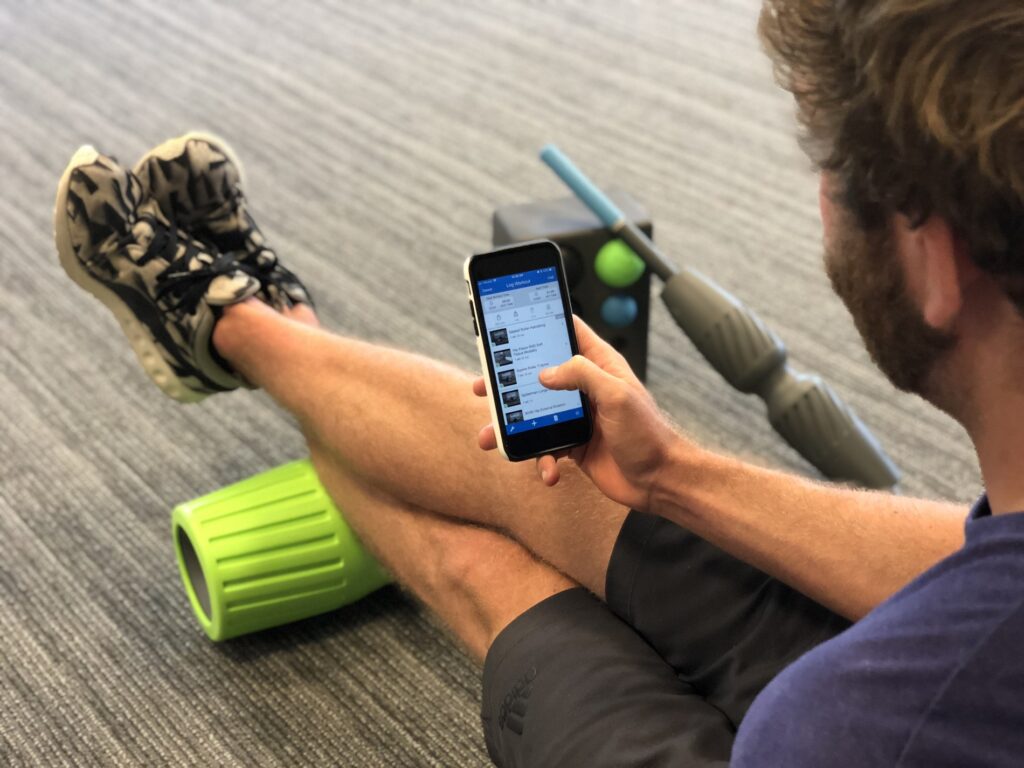
After understanding the market and defining your USP, it’s time to plan your app’s features (though, remember, you could just push a button and get your top tier fitness app from Exercise.com—get a demo here to see if you qualify!) Here are some features to consider:
Workout Programs and Routines
Provide your users with exercise routines tailored to their fitness level and goals. This could be done through pre-recorded videos or in-app tutorials.
Read More:
Progress Tracking and Analytics
Enable your users to track their progress using data analytics. This could include tracking calories burned, weight loss, or workout times. Use this data to provide personalized workout recommendations to your users.
Social Interaction and Community Building
Allow your users to connect with others in the app and share their progress. This could include features like challenges, leaderboards, or in-app messaging.
Read More:
Nutrition and Meal Planning
Provide meal plans and nutrition tracking to complement users’ workout routines. This could include calorie suggestions based on a user’s goals or access to a nutrition database.
Read More: Best Gym Software with Nutrition Tracking
Gamification and Rewards
Incentivize your users to achieve their fitness goals by providing rewards and gamification. This could include achievements, badges, or tickets to competitions or event tickets.

Read More:
- Best Fitness Software for Influencers
- Personal Training Workout Templates
- How to Make Money Selling Workout Plans Online
How easy is it to create a fitness app with Exercise.com?
Creating a fitness app with Exercise.com is simple and straightforward. The platform provides an intuitive and user-friendly process, allowing you to create a custom-branded app without any coding or technical skills. They have a dedicated team that will guide you through every step, from initial design to launch.
What features can I include in my fitness app using Exercise.com?
Exercise.com provides a comprehensive feature set for your fitness app, including workout plan creation and tracking, e-commerce capabilities, performance health assessments, automation, and more. You can also integrate live workout sessions, 1-on-1 training, and nutritional guidance, creating a holistic fitness platform for your clients.
Read More: What features should a fitness app have?
Can I create my own fitness app?
Absolutely! Creating your own fitness app has been made easier with platforms like Exercise.com. They provide you with a platform to create a custom-branded fitness app that suits your needs without having to write a single line of code.
How much does it cost to create a fitness App?
The cost of creating a fitness app can vary greatly depending on its complexity and features. However, using a platform like Exercise.com can be a cost-effective way to create a feature-rich, custom-branded fitness app.
Read More: How much does it cost to make a fitness app?
How do I make a fitness tracker app?
Building a fitness tracker app from scratch requires significant technical knowledge. However, with Exercise.com, you get access to built-in fitness tracking capabilities in your custom-branded app.
How do I make an app for my gym?
To create an app for your gym, follow these streamlined steps:
- Define Your Objectives: Identify the key functions your gym app should serve, such as class schedules, member sign-ups, and workout tracking.
- Choose the Right Development Method: For a hassle-free solution, opt for Exercise.com. The platform allows you to build a customized gym app without extensive coding knowledge, streamlining the entire process.
- Design the User Interface: Use Exercise.com’s gym app development templates to create an intuitive and visually appealing gym app design that enhances user experience.
- Develop the App: Leverage Exercise.com’s app-building tools to easily integrate essential features and content tailored to your gym’s needs.
- Test the App: Conduct user testing to gather feedback and ensure functionality. Exercise.com provides ongoing support to help address any issues.
- Launch and Market the App: Once finalized, launch your gym business app on major platforms. Promote it through your gym’s marketing channels to maximize visibility.
- Collect Feedback and Update: Utilize Exercise.com’s analytics to monitor app performance and continuously improve user experience based on feedback.
Using the Exercise.com app framework simplifies the gym app development process while offering robust features tailored for fitness businesses, making it the best choice for gym owners looking to enhance member engagement and streamline operations.
Is creating a fitness app worth it?
Yes, creating a fitness app can be worth it considering the increasing demand for fitness solutions that can be accessed anywhere, anytime. An app like the one you can create with Exercise.com can enhance your service offering and potentially increase your income.
What features should a fitness app have?
A fitness app should have features like workout tracking, interactive fitness challenges, virtual classes, and the ability to sell workout plans. Exercise.com offers these features and more in their custom-branded fitness apps.
Are fitness apps in demand?
Yes, the demand for fitness apps has been growing, especially with the increased interest in home workouts and health tracking. This trend makes now a great time to launch your own fitness app with Exercise.com.
Read More: Are fitness apps in demand?
How do fitness and workout apps make money?
Fitness apps can make money in several ways, including premium subscriptions, in-app purchases, advertising, and partnerships. With Exercise.com, you can easily monetize your custom-branded app.
Read More: How do fitness and workout apps make money?
How much does it cost to make an app like MyFitnessPal?
Building an app like MyFitnessPal from scratch can be expensive. However, with Exercise.com, you can create a custom-branded fitness app with similar features at a fraction of the cost.
How long does it take to build a fitness app?
The time it takes to build a fitness app can vary depending on the complexity of the app, but if you try to make a fitness app from scratch by yourself then it can take 12-18 months to create a fitness app. But with Exercise.com, you can have your custom-branded fitness app up and running often in less than 30 days.
What is the market for fitness apps?
The market for fitness apps is growing, with increasing demand for digital health and fitness solutions. An app created with Exercise.com allows you to tap into this expanding market.
How does a fitness app work?
A fitness app works by providing users with a platform to track their workouts, join fitness challenges, take virtual classes, book personal training sessions, buy products, and more. With Exercise.com, your app will also allow you to manage your fitness business operations.
What makes a fitness app successful?
A successful fitness app should offer value to users by providing unique, interactive, and user-friendly features. Exercise.com can help you create a successful fitness app with a wide range of customizable features.
Read More: What makes a fitness app successful?
How much does it cost to build a custom workout and training app?
Building a custom workout and training app can cost $500,000 to $1,500,000, or even more, if developed from scratch with extensive functionality. But with Exercise.com, you can create your own custom-branded fitness app at a much more affordable cost.
How long does it take to build a fitness app by yourself?
Building a fitness app by yourself can take 12-24 months. However, with Exercise.com, you can quickly launch your own custom-branded fitness app.
How do I make my fitness app stand out?
To make your fitness app stand out, it needs to offer unique features, have an engaging design, and provide value to users. Exercise.com enables you to create a standout app that reflects your brand and meets your customers’ needs.
How do I start a fitness app business?
Starting a fitness app business involves several steps including understanding your target market, defining your value proposition, and building the app. With Exercise.com, you get a custom-branded fitness app and the support you need to launch and grow your fitness app business.
Why should I use Exercise.com to get a fitness app?
Exercise.com simplifies the process of getting your own fitness app. The platform allows you to create a feature-rich, custom-branded fitness app without the need for technical knowledge. Plus, we offer support and guidance to help you make the most of your app for your business growth.
Do I need technical skills to create a fitness app with Exercise.com?
No, you do not need any technical skills to create a fitness app with Exercise.com. We will assist you throughout the process, ensuring your app is professional, user-friendly, and fully customized to your brand.
How can Exercise.com help me monetize my fitness app?
Exercise.com offers various monetization features such as ecommerce capabilities, membership management, and in-app purchases. You can sell workout plans, sell personal training packages, run fitness challenges, offer online training, and even sell products or merchandise directly through your app.
Read More: How do I monetize my fitness app?
Is my fitness app limited to only workouts with Exercise.com?
No, your fitness app is not limited to just workouts. With Exercise.com, you can provide a holistic fitness service that includes diet plans, progress tracking, live sessions, ecommerce, habit tracking, progress photos, fitness assessments, and more. This makes your app a one-stop solution for all your clients’ fitness needs.
How much does it cost to create a fitness app with Exercise.com?
The cost of creating a fitness app with Exercise.com depends on the complexity and range of features you want to include. However, compared to hiring a software development company or building an app from scratch, Exercise.com offers a much more cost-effective and efficient solution.
Can I use my own brand and logo in the app created with Exercise.com?
Absolutely! One of the main benefits of using Exercise.com is the ability to create a custom-branded app. This means your app will carry your logo, brand colors, and style, providing a consistent experience for your clients.

Building a fitness app can be a challenging and rewarding experience. By understanding the basics of fitness app development, conducting market research, and building a well-designed, user-friendly app, you can create a successful app that meets the needs of your target audience while also achieving your desired outcomes.
See why Exercise.com is the best choice for fitness influencers, personal trainers, gym owners, and fitness professionals who want to create fitness apps and grow their fitness business online and in-person. Are you ready to create your own custom-branded fitness apps?












